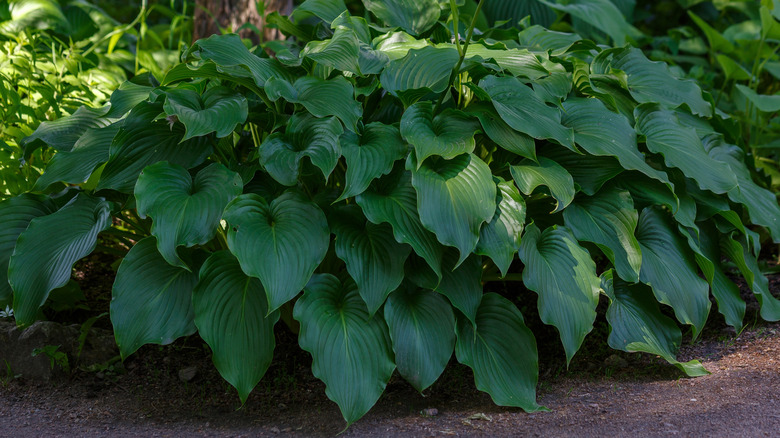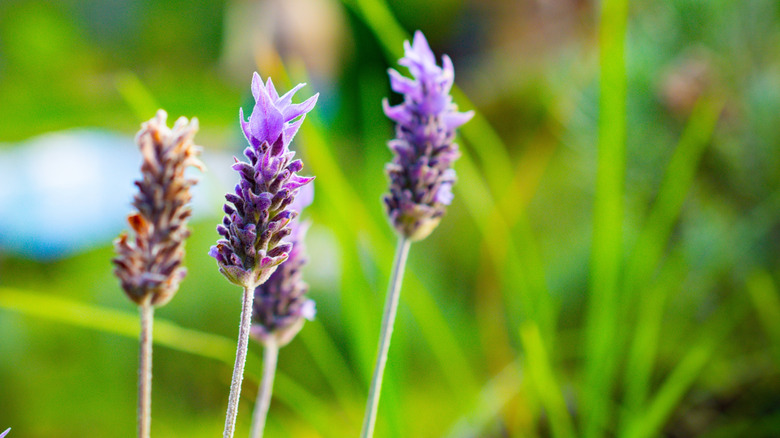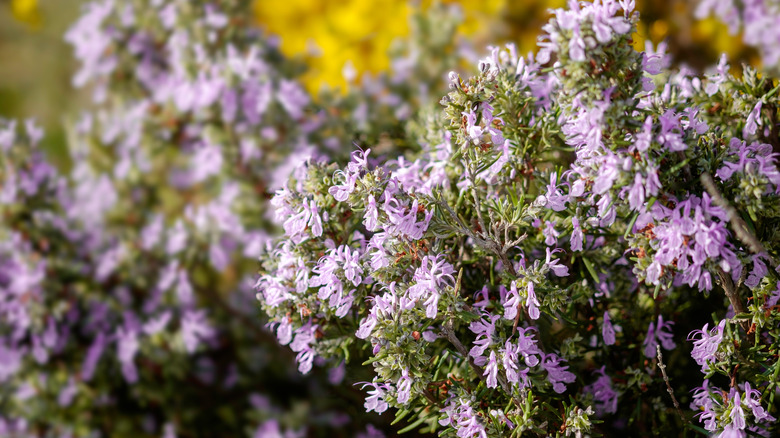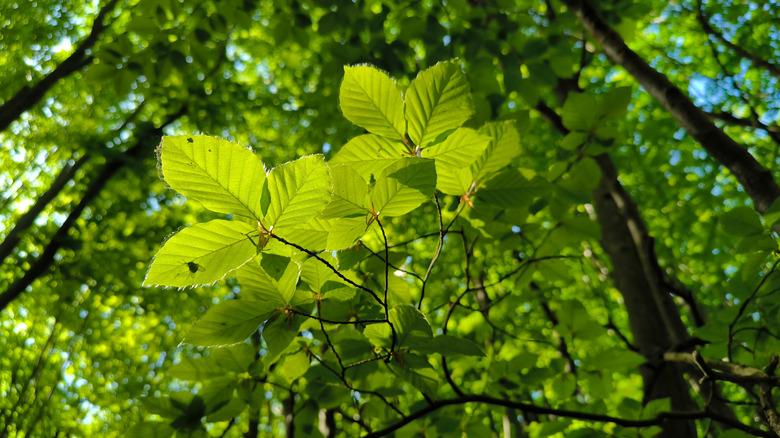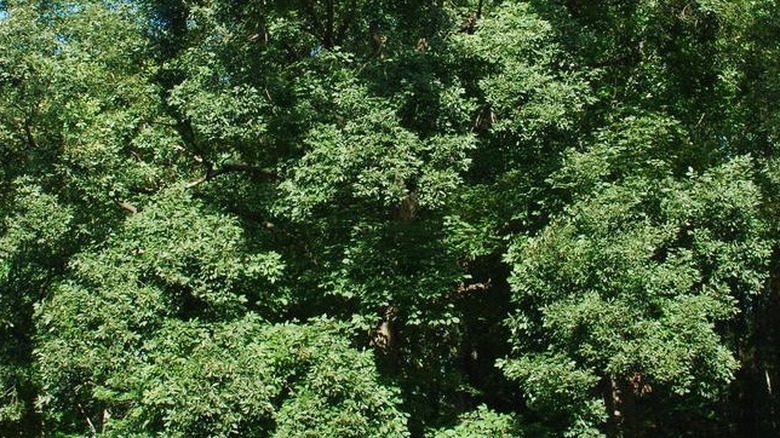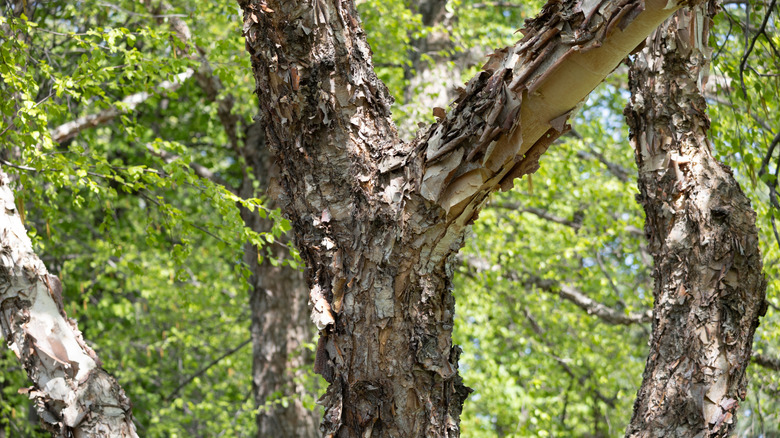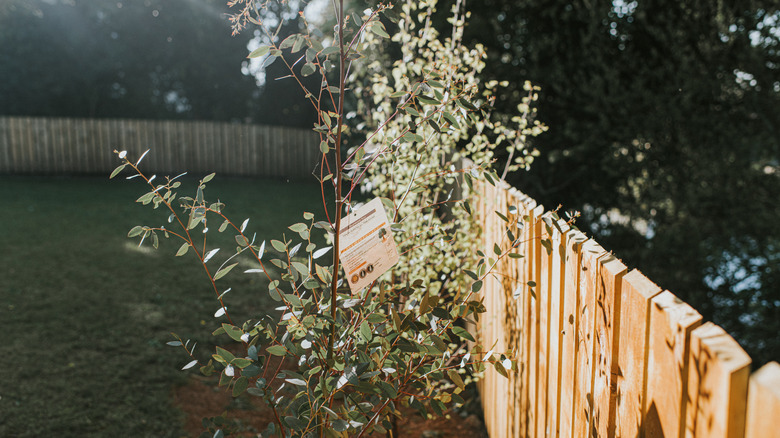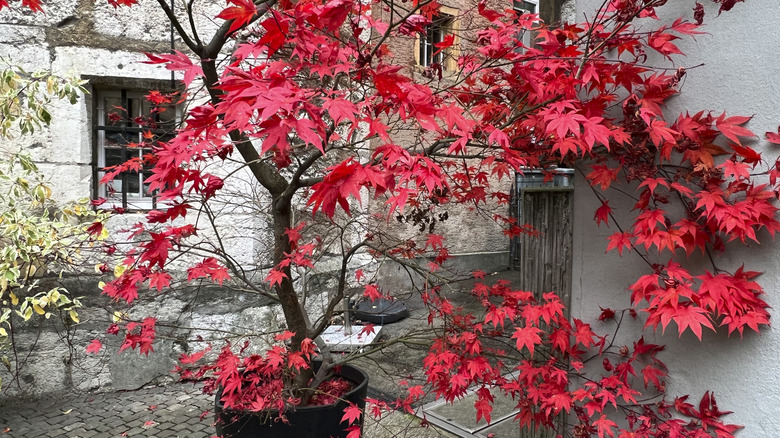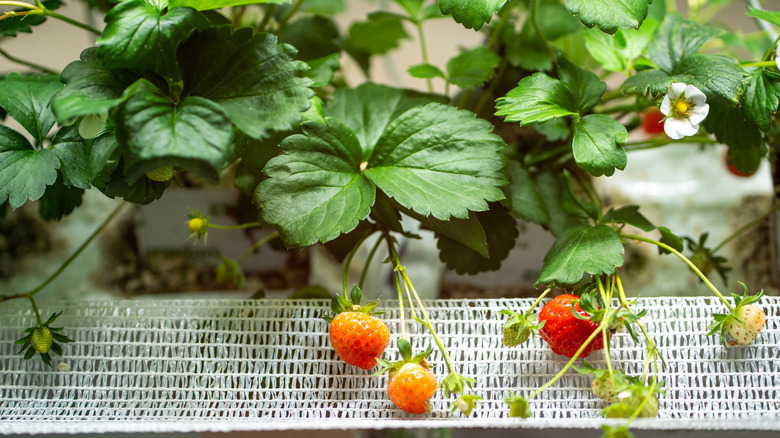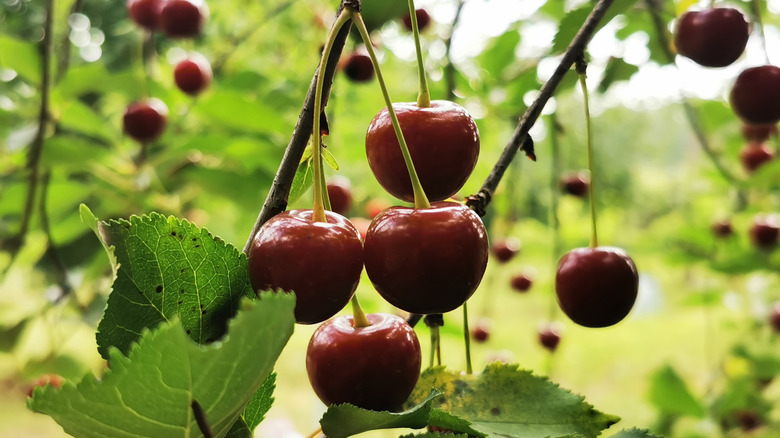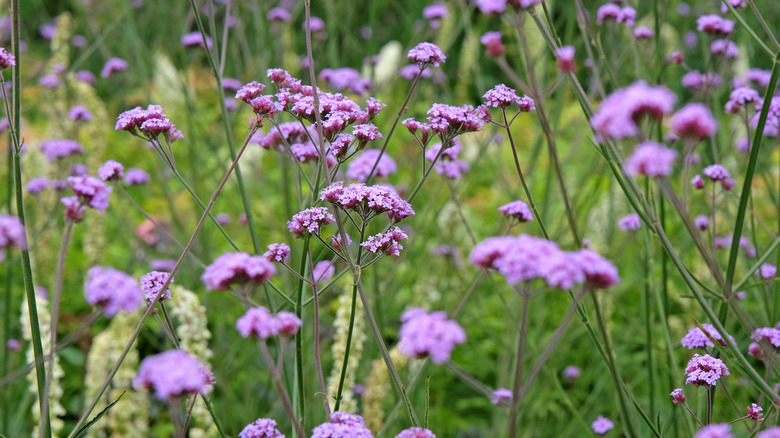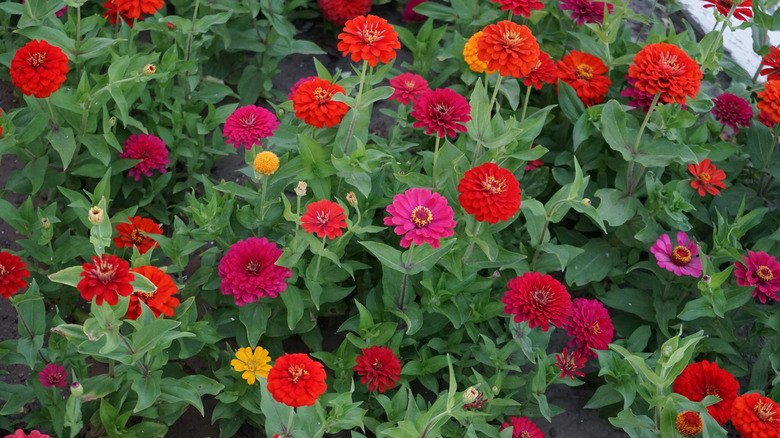11 Plants You Should Keep Away From Your Hostas In The Garden
Frankly, you'd be hard-pressed to find a residential landscape that doesn't carry hostas (Hosta spp.). These herbaceous perennials sprout foliage in gorgeous colors, variegated patterns, and sizes that instantly lift the space and are versatile enough to complement a diverse set of plants. Since they adore being in shade, they make excellent additions to mature landscapes where tall canopies often make the area underneath inhospitable to most plants, including grass, due to limited access to sunlight. Besides, they're highly adaptive, persisting in a broad range of soils, and generally demand little attention and care.
Despite their broad adaptability and versatility, there are certain plants that hostas don't get along with. Take beech and birch trees, for example. Despite creating an amenable environment shade-wise, they make unsuitable companions because of their lateral roots that outcompete hostas for essential resources. Others, like eucalyptus and hickory trees, risk smothering hostas underneath the weight of their litter. Prized herbs, such as lavender and rosemary, need to be kept away because they don't require as much water. In short, while matching plants visually is important, such pairings won't last if their growth requirements don't match, too. Plants that demand lots of sun, create resource competition, or are pest magnets won't sit well with these shade-loving perennials and have been discussed below.
Lavender
In theory, combining lavender (Lavandula spp.) and hostas in garden beds appears like a great option for pest control. Since lavender infuses the surrounding air with a pleasant fragrance that gardeners love but deer find offensive, it helps protect hostas from herbivory. Moreover, snails, which are commonplace on hosta, somehow avoid beds with lavender. However, this pairing fails due to the plants' varied water requirements. Even though they can tolerate drought after establishment, hostas perform best when their soil remains consistently moist. In contrast, lavender desires dry sites. Grow the two together, and your hostas must contend with stunted growth.
Rosemary
Much like lavender, rosemary (Rosemarinus officinalis) should be kept away from hostas in your garden, especially if you plan on harvesting it. That's because their foliage grows best in full sun sites — partial shade is only tolerated, creating a mismatch in light requirements. Moreover, to replace the nutrients lost in harvested leaves, rosemary must be fertilized frequently. When given excessive nitrogen, hosta leaves grow soft and wilted. Such stress also makes them more vulnerable to foliar diseases. Besides, hostas appreciate well-watered locations, and you might lose rosemary in the process of keeping them happy, as the herbs will feel overwatered.
American beech
It can be tempting to utilize microclimates in your yard when companion planting. Case in point, American beech (Fagus grandifolia) can grow in full sun, with its dense canopies filtering the rays streaming through and creating dappled shade. This, to some gardeners, presents an excellent opportunity to grow shade-loving hostas. Unfortunately, this companionship is unlikely to flourish because beech trees sucker aggressively. In fact, their roots spread so prolifically that they can colonize the whole area. Being shallow-rooted, hostas are easily outcompeted for resources and space.
Shagbark hickory
Shagbark hickory (Carya ovata) and hostas are well-matched on their cultural requirements, since both adapt to partial shade, enjoy fertile soils that drain well, and share overlapping hardiness zones (4 through 8). However, shagbark hickory is a prolific shedder and plasters the area underneath with leaves and bark tissues. If your hostas are young or small in size, this litter can easily smother them. Worst of all, if these leaf piles stay unattended, they can become hotbeds for snails and slugs — gastropods with a taste for hosta leaves. Expect to see tattered plants once these pests get down to business.
Birch
There are plenty of places in your yard to grow birch trees (Betula spp.), but hosta beds aren't one of them. Sure, these trees offer plenty of shade that hosta may appreciate, but they also create a host of problems with their root system. As birch trees grow, their roots spread extensively and are even notorious for raising foundations and walkways while making any existing cracks and crevices worse. So, it's no surprise that they're equally belligerent with hostas that don't root very deeply, choking them out.
Eucalyptus
You might want to think twice before adding a eucalyptus tree to your garden if it's already hosting hostas. Also known as the gum or silver dollar tree, the eucalyptus (Eucalyptus spp.) tree tends to shed all of its leaves once they're one year old. Even though this phenomenon doesn't hurt the overall aesthetic because these oil producers quickly replace the dropped leaves, the litter is significant and can be a lot to handle for understory hostas. To make matters worse, eucalyptus trees have high watering needs and often come out on top in this resource competition, thanks to their size, negatively affecting hostas.
Maple
Avoid growing hosta underneath tall maple trees (Acer spp.). Although the perennials will do just fine initially, you'll notice that they aren't growing in size as time passes by. That's because maples grow very fine roots that tangle with hostas' root systems and outcompete them for resources, especially water. Not to mention, digging through a maple tree's roots is a tall task if you're just getting hostas into the bed. Some gardeners have found success growing hostas on raised beds under maple trees and by removing interfering roots, so if you're up for such labor, you may give this pairing a go.
Strawberry plant
Before you decide to tinker with lighting and settle on tucking strawberries (Fragaria x ananassa) into partially shaded hosta beds, reconsider. While this coupling can certainly work — given that both the perennials like moist, fertile soils — issues may crop up when slugs and snails become active. Gardeners who have grown strawberries are perhaps privy to the damage strawberry leaves and fruits take when these gastropods are active. As these bad guys also share an affinity for hostas, the infestation can metastasize. Not only will you lose the crop, but you must also deal with ragtag foliage on hosta plants.
Cherry tree
Cherry trees (Prunus spp.) don't pair well with hosta. Granted, their canopies can offer the shade these perennials desire, but their roots tend to play spoilsport. Cherry trees develop an extensive root system near soil level. Most times, the roots are arranged so thickly that gardeners often struggle to irrigate the area. This severely affects the growth of understory plantings, and unfortunately, hostas cannot escape this fate either. If planted underneath, expect these shade-loving perennials to remain small in stature.
Verbena
Although verbenas (Verbena spp.), like hostas, prefer good drainage, they don't make great companions. For starters, they like to be located in sites that receive direct sunlight for the greater part of the day, which hostas find excessive. In trying to create a happy medium by lowering sun exposure, you may cause verbenas to contract powdery mildew, which doesn't make for a great aesthetic. Moreover, verbenas don't relish staying in exceedingly moist beds, unless they're newly planted and are yet to establish themselves fully into the ground. In such conditions, they may attract snails and slugs that could move over to hostas.
Zinnia
Turns out, hostas are popular plants you shouldn't grow near zinnias in the garden. And for good reason: they differ in their requirements for light exposure. For zinnias (Zinnia elegans), a minimum exposure of eight hours of direct sunlight is non-negotiable. In contrast, hostas prefer shade, with most performing well in partial and dappled shade, and sometimes even heavy shade. Try as you may, but this interplanting is unlikely to yield great results — either the zinnias would fail at displaying their best colors, or the hostas would grow stressed from overexposure to the sun.
